Chapter 3.4—The Kids
I’ve spent a lot of this past week worrying about my kids (…and raffles and podcasts and Blogger Book Fair Workshops…). People who’ve listened to CraftLit since 2006 have heard a lot about my boys and their various challenges—physical and scholastic. Well, now the boys are 10 and 13-1/2. They’re interesting, funny, kind people, and I’m happy about that.
They are also hopeless when it comes to school.
They’re plenty smart and they both have fantastic memories, but they’re very creative, divergent thinkers.
And that means they think a lot.
And that means they daydream a lot more.
And that means they miss a TON. Usually it’s because their teacher said something interesting… which makes them think of some other interesting thing they learned and… then they’re off! And thinking! And daydreaming! And… oy vey!
Now, according to some things I’ve read, the fact that they are thinking like that is a good thing. A very good thing. It means they’re putting pieces together. It’s the best way to learn: creating complex synapse-maps in our brains, linking disparate information from this subject to that subject in what can most easily be described as a series of hyperlinks.
My kids are, in fact, just like Wikipedia. Zillions of pieces of information all added from different places and all linked out to even more information brought in from astonishingly more different places.
So that’s great.
But that’s also awful, because it means they’re pretty good in a conversation (though they interrupt too much with spiraling ideas) but they’re lousy in class. (I know—Montessori and Waldorf and etc etc etc—if you go back to the start of the podcast, you’ll hear all the tsuris we went through with Thing 1. In retrospect, I wish we’d been able to find a Waldorf school, but there you are. Life.) Thing 1 has been identified as ADD(distractible) and Thing 2 is just… an enigma. We know they need to do something to help them concentrate, but we’re still working on finding the right something. The good part is that the boys’ teachers like them and see their bright eyes* and know that these are kids who’d be better off with a book and a good socratic seminar—but, maybe with four people, not 28.
This was driven home by their recent report cards and the immediate garbage-bagging of every electronic device the kids have access to. They’re goin’ analog, baby! When their grades come back up, we’ll return the computer monitors… slowly… maybe…
But back to the school thing.
What’s a mom to do?
Study up on this. (Many of you sent me this link, thank you!)
And scrounge around for something to use with the kids here, here, and here. (UPDATE: Just found this one with a teacher guide!)
And in desperation, still trying to find something applicable to school rather than business conferences, this:
For an eighth grader, taking notes like that during class is hard.
For a fourth grader, it’s impossible… I thought.
But because I’m a scientist at heart, we tried an experiment**.
Normally I would have used an NPR segment. They’re substantially longer than most radio news, they’re not hysterical, and they try to be comprehensive in their sources (and, importantly, no visuals). But I couldn’t find a segment that I thought they’d be able to follow without a lot of background information. Instead, I found a TV show that interested them, that included facts and details, and also included some commentary/humor/emotional stuff—and that they didn’t need to watch every second of in order to follow (because: Cognitive Anchoring). That set of three characteristics I mention are things that usually get my boys going off into their head. Something appeals to their logic, their humor, or something they care about (because they’re pretty much like the rest of us in that way) and they drift off into that synapse map.
I chose the show Shark Tank. It’s a show I thought I’d completely hate, but which has surprised me over and over again (especially the episode where “Mister Wonderful” choked up and funded a man’s business because it was “the right thing to do” rather than a sure-fire investment). Listening to this show, the boys would have to track numbers (how much a company was valued at), a pitch (starts logical, often gets emotional), and responses from the panel (logic) for one complete segment and try to sketchnote it while they listened… and it worked pretty well for Thing 1. Thing 2 is sort of there, but that seemed right to me, too.
The pitch was to fund the syndication of an already-running
romance radio-dedication show.
The interesting bit was what happened the next day.
Thing 1 came home from school and told me he was able to sketchnote a few times during the day but that most of his teachers had them take notes onto fill-in-the-blanks graphic organizers from PowerPoints they watched (making me think, no wonder you drift off… but his teachers this year are really good/interesting people so I’m probably just being unfairly judgy). He tried to sketchnote in the margins.
But Thing 2…
Thing 2 is an emotional grab-bag. Genial when in friendly social situations but high-strung and anxious when… well… we’re still trying to figure out the triggers. I know when I ask him to put his homework into his backpack he freaks out and starts shredding paper… what is that? Fear of nylon zippered bags?! You got me.
Anyway.
Thing 2 came home and plopped down, grabbed a blank paper, and started drawing: clouds. Cloud types. Cumulus, cirrus, cumulonimbus… and explaining them to me as he went. He finished what turned out to be a nice little info graphic, then he pulled out and showed me his spiral notebook from class—where a rougher version of the same thing graphic was.
He took notes!
And he remembered what he’d drawn in class!
So, what have we learned?
We’ve learned:
- that we’ve all been right about this stuff all along. ::grin::
- that things that can be done with automaticity (stick-figure sketching/”drawing” text with motifs like arrows, etc) while listening to something important can help you remember much more of what you hear and wind up with a specific visual representation in (attractive and graphically-significant note form for future review and study).
- that kids can benefit from all of this, too.
- that there aren’t enough resources out there for helping kids learn to sketchnote (not that I’m bitter).
- and I have certainly learned that more ADD research could, perhaps, be focused on this as a complement to, or replacement for some medications.
Last thought:
Both of my boys CAN knit and Thing 2 has occasionally finger-knit in class, but it’s distracting—much bigger hand movements than little 2.5mm dpns going around a sock. Don’t even try to get a 13 year old boy to knit in school. Just don’t. If he wants to, he will. But both of my boys draw. For the longest time Thing 1 thought he was lousy (his penmanship has improved 1000%) but he’s always been good with stick figures in a sort of comic style, clearly-posed kind of way (he’s better on paper but he’s at school right now so I can’t find my favorite versions of his art. He did this one on his computer):
Thing 2 goes more for the Manga styles:
(and they’re both going to kill me. I can’t find their best stuff…)
All of this is to say, if you have kids, they really DO NOT have to be artists to doodle or sketchnote. I’m hoping—sincerely—that more attention is focused on researching how to use Cognitive Anchoring in the classroom. I know my Occupational Therapist friends must have some ideas. Please share links and thoughts below. The Web is wide and we all stumble upon interesting stuff in our travels.
*The brilliant and wonderful bosses at my first teaching job (at IRD) called it “bright eye syndrome”—it’s the kids who have bright eyes, who you know are thinking, who want to learn more. There are bright-eyed kids in class, and then there are the rest.
**Ridiculously, I am a scientist at heart. I got better grades in science than I did in English throughout HS. One of my students once got ahold of saw my HS report cards and was baffled. Why not go into science rather than theater and English? The answer was easy: look at my math grades.
Nuff said.
Bonus Extras
Tangentally connected but interesting videos:
Sent in from Andrea, CBS Morning–and, in case you wondered about the amount of looking that’s going on for those doodlers, notice that they all talk about how automatic it is, that they do their doodles “without thinking” and it “helps them focus”. Even Jesse Prinz’ faces are so similar, you can tell he’s doing these doodles on autopilot.
This video needed to be showed, and came up because of my “at heart I’m a scientist” note. I’m simply appalled and I think you will be to! I’m going to subscribe and tell everyone how awesome Emily Graslie is… and I’m glad I’m a podcaster–no one gets to comment on my looks!
OY!
And, because I’m all jazzed about science-y women, here’s a fave from ViHart…
Which led to this:
3 Comments




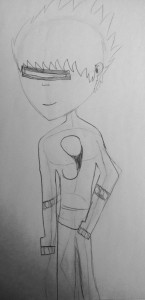
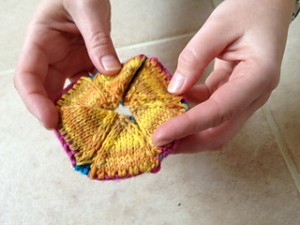

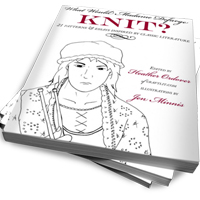
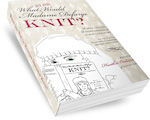


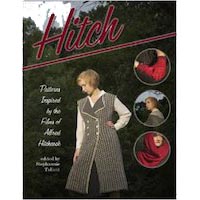
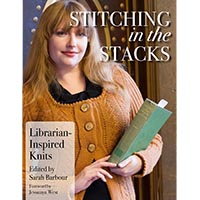



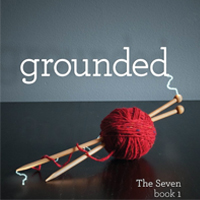

Hexaflexagons. Cool. 🙂
I have an explanation for the fill-in-the-blanks graphic organizers for taking notes. An administrator went to a Robert Marzano workshop and decided to add them to the teachers’ evaluations.
Because graphic organizers are one of Robert Marzano’s “High-Yield Instructional Strategies,” teachers are required to use them for just about EVERYTHING. Graphic organizers and fill-in-the-blank notes are also mandated by many IEPs. The appropriateness doesn’t matter. The checklist on the IEP and the evaluation does.
Ugh.
Yes, that sounds about like what I encountered. A good idea in micro mandated to a useless macro.
Some days I make bitter jokes.
Some days I weep.